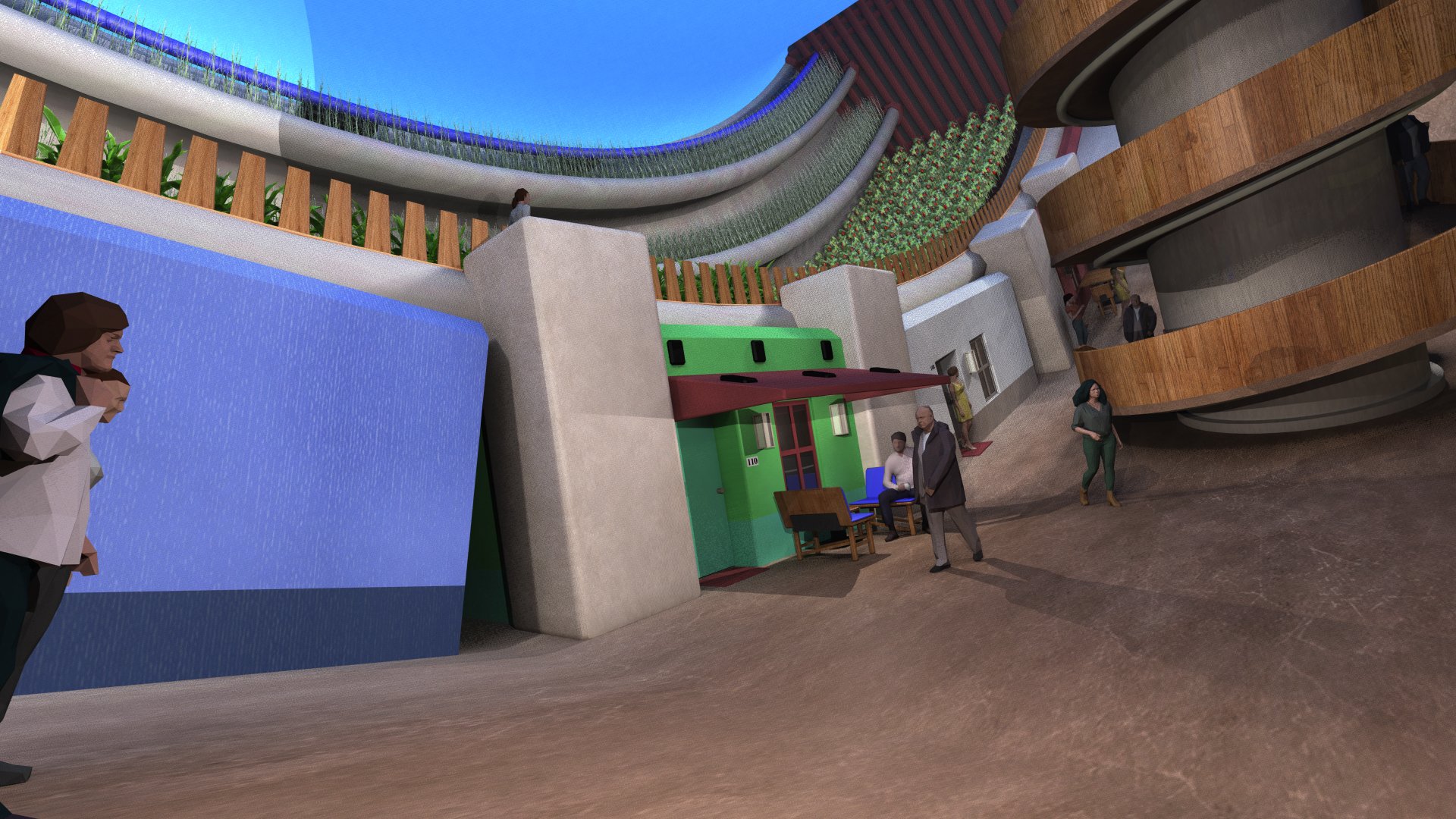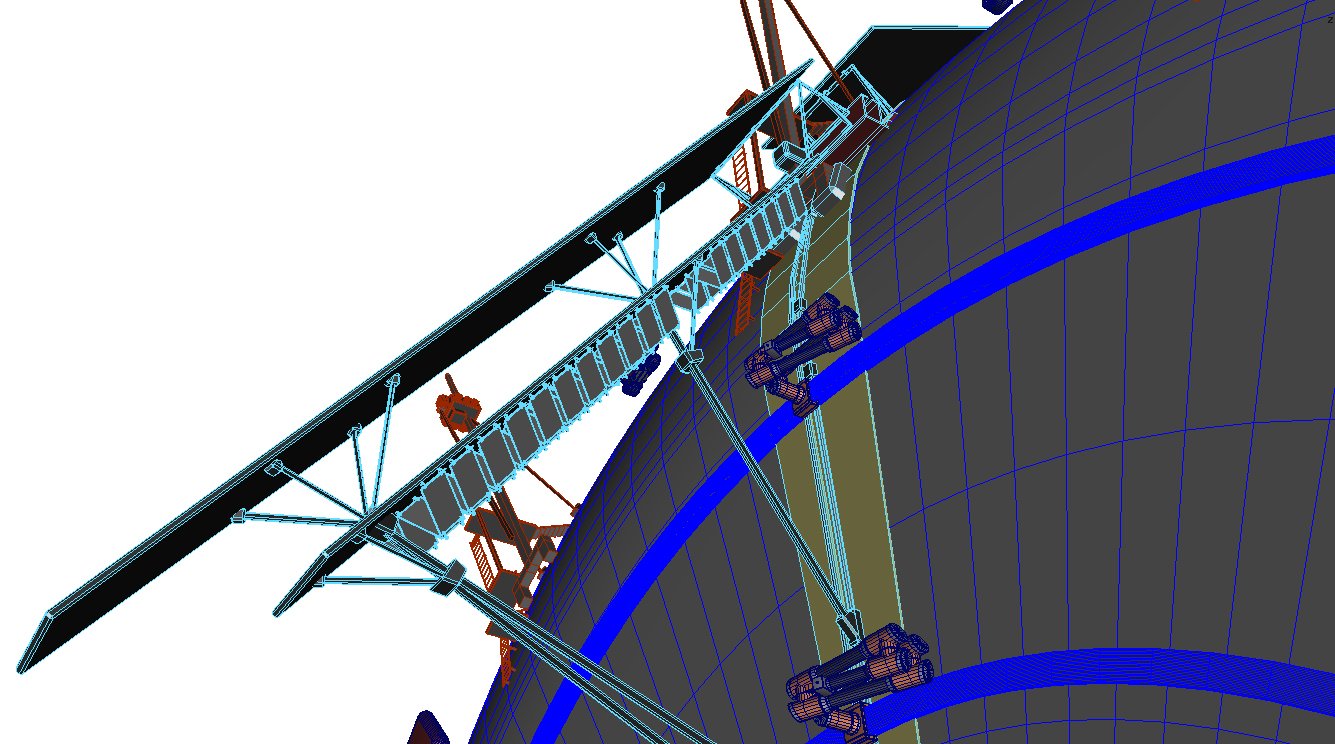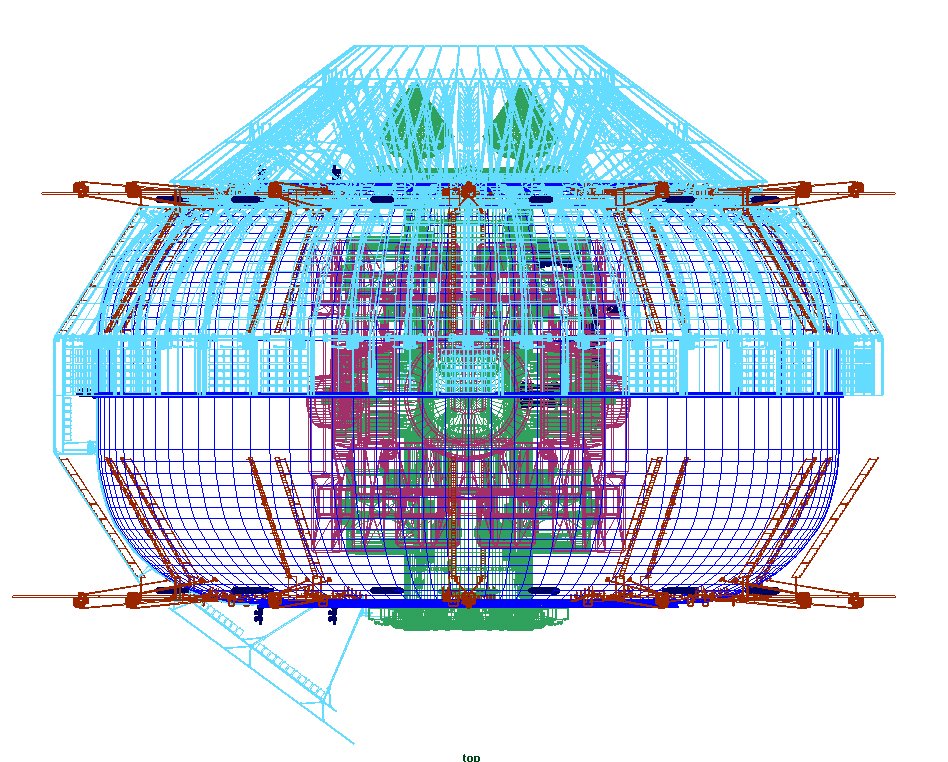268Ft Rotating Space Station(RSS) Business Plan
Product
Exodus Star provides space habitats in low Earth orbit, this small 268ft (81.7 meters)diameter rotating space station can provide up to 1G of gravity enabling long term habitation without the negative effects of living in space.
Customers
The target audience for Exodus Star will be governments, researchers, companies and organizations. Specifically, we specialize in providing a habitat for living and working, with areas for manufacturing, research, assembly and repair.
Future of the Company
New space-based solar power systems are being funded, large telescope arrays are being designed and an increase of military activity is raising the need for permanent habitation in Orbit. All these new systems will need servicing and while robots will be able to accomplish most tasks, having humans in space will be essential and with SpaceX's StarShip it can be profitable. We will provide a home for those workers and scholars to accomplish their goals and research while staying healthy and strong.
Mission Statement
Healthy productive living in space.
Market Research
Industry
Exodus Star enters at the start of a new industry in space and we will initially focus on low gravity research, we look to provide these environments to give us more knowledge before we attempt long term habitation on the Moon or Mars. The other side is the hardware that gets us into space, and now with the advent of fully reusable rockets the need for orbital repair and maintenance is going to happen. Having a hanger for docking and removing an engine then using a machine shop to repair a part can be the advantage of saving a multi-million dollar spacecraft and specifically, saving lives. Craft and satellite assembly in space can allow for larger structures and design flexibility. Future Moon and Mars missions can have a muster point to start their expedition. Companies can lease space for their own projects, a depot for fueling and loading oxidizer, expensive tourist destination, medical companies can safely do research and development, information processing and backup facilities can provide peace of mind, large platforms for space and planetary monitoring systems, and finally Exodus Star can provide space-based security and defenses for NATO countries.
Customers
The target customers for Exodus Star are government entities such as National Aeronautics and Space Administration(NASA), (ESA), Japan Aerospace Exploration Agency(JAXA), UK Space Agency, research institutions and large corporations. Other customers may be the US Military, specifically the US Space Force and NATO allies.
Food
Exodus Star orbital station will have 34,946sqf (3,247sqm) of crop area in the habitat providing 350sqf (32.5sqm) of growing area per person, although this might not be enough food to fully sustain the crew it will limit the amount of food needed from Earth. Mid-station areas may be used for growing extra food as well as having bioreactors to grow editable Spirulina blue-green algae and Seaweed.
Service Line
Product/Service
Services Include:
Low gravity research
Orbital repair and maintenance
Craft and satellite assembly
Moon and Mars Expeditions
Leasing office and production space in 1G or less
Depot for fueling and loading oxidizer
Tourist destination
Medical and Biological Research
AI training and data centers
Space-based security and defense, Risk Management
Large platform for remote monitoring systems
Station capable of housing 80 paying passengers, 1.2 million dollars each per year.
Eight station bays, 7 for lease at $500,000 per month.
Real Estate rental – working areas, low gravity areas. $500 per square foot.
Remote sensing external platforms for lease, $1000 per square foot.
Short term Tourism $300 thousand per person per visit or month.
Secure remote access to station $1,000 per month subscription.
Temporary work for station crew $450 hr
Remote feed for public is $7 a month subscription.
Special built space station for client, 4 billion dollars.
Lotteries, pay $100 for the chance to win a trip to space.
$200,000,000
Total estimated annual revenue
Cost of Business
Exodus Star projected operations costs for a 20 man crew is $39,720,000 a year:
Captain - $900,000
Communications Officer - $500,000
Chief Engineering $550,000
Mechanic - $450,000
Plumber - $450,000
2 Electricians - $450,000
3 Horticulturists - $450,000
Biologist - $450,000
Environmental Control - $450,000
Janitorial - $400,000
2 Cooks - $400,000
Waste and Recycling - $420,000
2 General Crew - $400,000
Technology Specialist - $450,000
Administrative - $400,000
Maintenance, Miscellaneous and supplies - $13,000,000
Crew launch per 5 years – $60,000,000
Ground support crew and home headquarters – $5,000,000
Cost of Development
Cost of launch activities are based on a Single Starship placing 150 Tons into orbit at a stated $10 million.
Polyurethane Hull – 7,572,406 pounds (3,434,786 kg)
Station assembly – 5,000,000 pounds (2,267,962 kg)
Total of 12,572,406 pounds (5,702,747 kg) for a combined 42 launches
42 launches at $10 million is $420 million
Station materials and systems. $150,000,000
Research and Development - $120,000,000
Construction Crew Transportation – $120,000,000
$810,000,000
Total cost of construction
Product Lifecycle
The life-cycle of the station is expected to be 40+ years. At that time it may be retired based on new technologies and materials.
Intellectual Property Rights
Exodus Star is a for profit corporation in the state of Louisiana.
Research and Development
The company is planning to conduct the following research and development:
Learn the process of making a balloon structure for holding the polyurethane foam
Develop process of using a manifold to control foam mixing and deployment
Work with SpaceX for the launch and deployment of materials
Running closed loop habitats and growing food
Using Artificial Intelligence for station systems and space traffic control
Using LED's to illuminate large habitats
Researching polyurethane foam and adding materials to aid in radiation protection
Building and controlling high power electrical systems in space
Marketing & Sales
Growth Strategy
To grow the company, Exodus Star will do the following:
To continue to build new stations
Show governments and corporations the need to use stations
Expand station network to geostationary orbit and the Moon
Use partnerships to mine resources on the moon
Work with SpaceX to make access to stations cheaper
Communicate with the Customer
Exodus Star will communicate with its customers by:
Online member network
Using social media such as Twitter, YouTube, Facebook, and LinkedIn
Providing contact information on the company website
Space Station
Exodus Star is designing a small 268ft (81.7m) diameter 170 foot (51.8m) wide rotating space station with a center bay opening large enough to house a Starship spacecraft.
The construction of this habitat will be to expand 7,572,406 pounds (3,434,786kg) of polyurethane foam into an inflatable torus shape balloon. This will be the main structure of the station and with the current solar panel configuration the station will position mostly perpendicular to Earth in order to keep the solar panels facing the sun.
The two part polyurethane will be launched into 26 containers that will then be connected to a simple manifold with a mixing coupling that empties into the balloon template. Once the foam has hardened the central hanger will be reinforced and a wire support system will wrap around the outer shell of the station adding support to the foam. Large pads will be glued down to distribute the pressure of the wires and provide attachment points for the solar panel frames. A track ring 90% up each exterior side will house a series of motorized weights which will move around the track balancing the spin of the station.
24 exterior towers will house antenna, sensors and 2 Hall Effect thrusters on each tower, these ion thrusters will be on a swivel to give the station an ability for spinning up and moving. This will be a slow solution, calculations show that it will take 143 days for spin up. It might be better to use gas thrusters or rockets but more research is needed for this solution. The multiple antenna assist in maintaining a steady signal while the station spins. Exterior walkways will allow normal preventative maintenance with low risk.
The center of the station is the hanger, each side has a 4 sectioned door that open to allow craft to enter and leave and close to provide a safer work area. Inside the hanger are 8 bays, four which can be pressurized and 4 that stay in vacuum. Observation windows allow for easy visualization and remote control work. Four main rails run the length of the hanger to allow multiple robot arms to move about for assisting in work or moving craft around. Any of these arms are either AI controlled or a human can take over to perform needed functions. The size of the hanger, as stated before, is just big enough to fit a Starship and would create a safe environment for most maintenance work.
The mid-station allows for visual access to all 8 bays and multiple rooms at a range of .3g and .4g. Two entrances into the habitat, both a spiral ramp with an elevator in the middle. The habitat is designed to mimic the environment of Earth, it is setup around the look of a small town. Instead of roofs for the buildings a garden is grown to keep the station as self sufficient as possible. Large center walk area provides plenty of space for gatherings and activities, a LED strip will run along the roof for main lighting and the ceiling will be made to look like a blue sky.
The habitat will will need to have the ground covered in large panels placed over the polyurethane foam and some other areas will be reinforced with metal girders to add structural support. Between the station hull and solar panels will be radiators to help dissipate the heat of the interior.
Most of the same systems we use on Earth will be able to be used in orbit, having gravity dramatically decreases the cost of living in space, CO2 removal from the air is easy in a gravity environment, sewer reprocessing, water filtration, electrical subsystems... The technology for this station already exists. Starship now makes working in space economically feasible.































